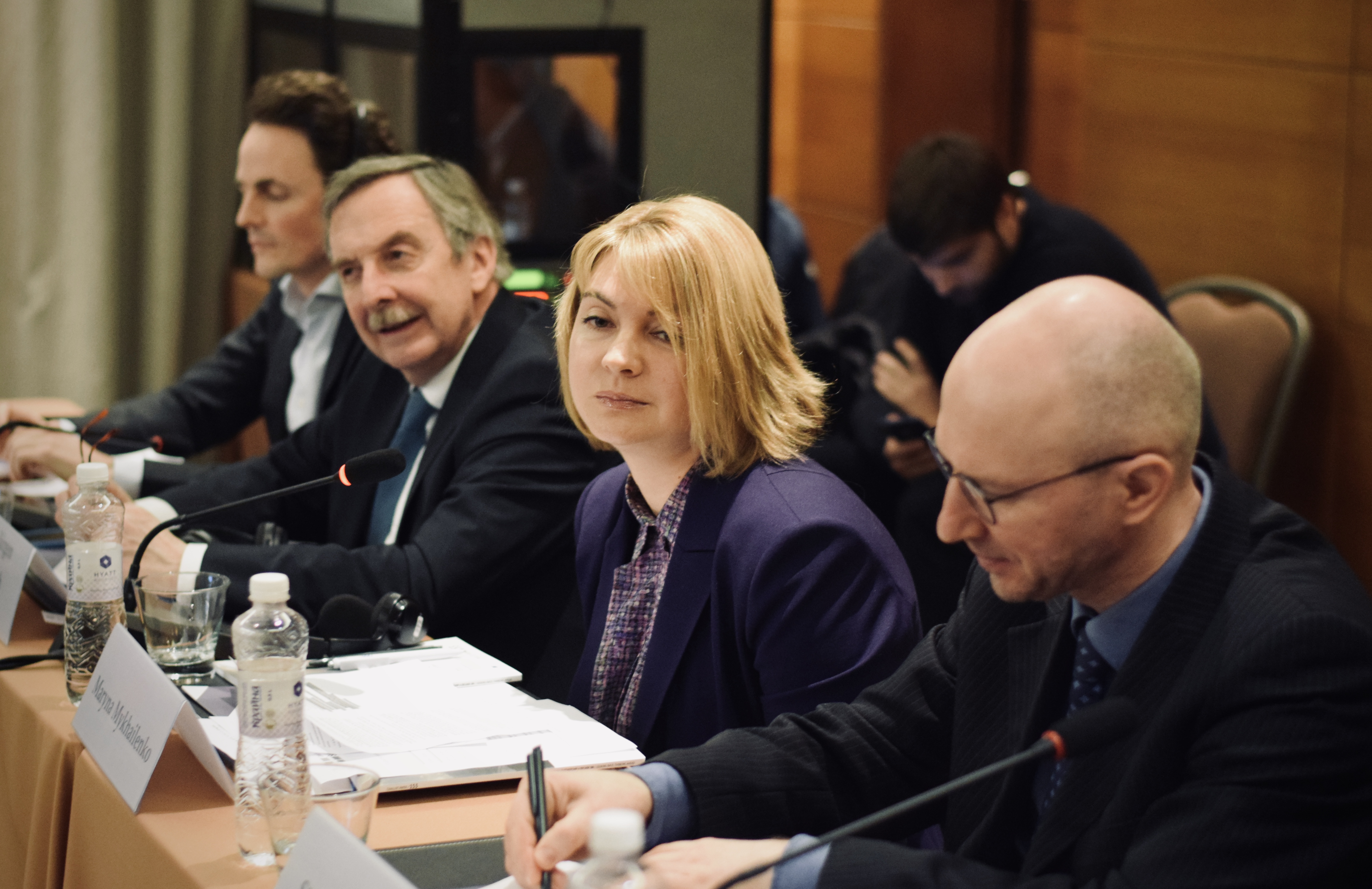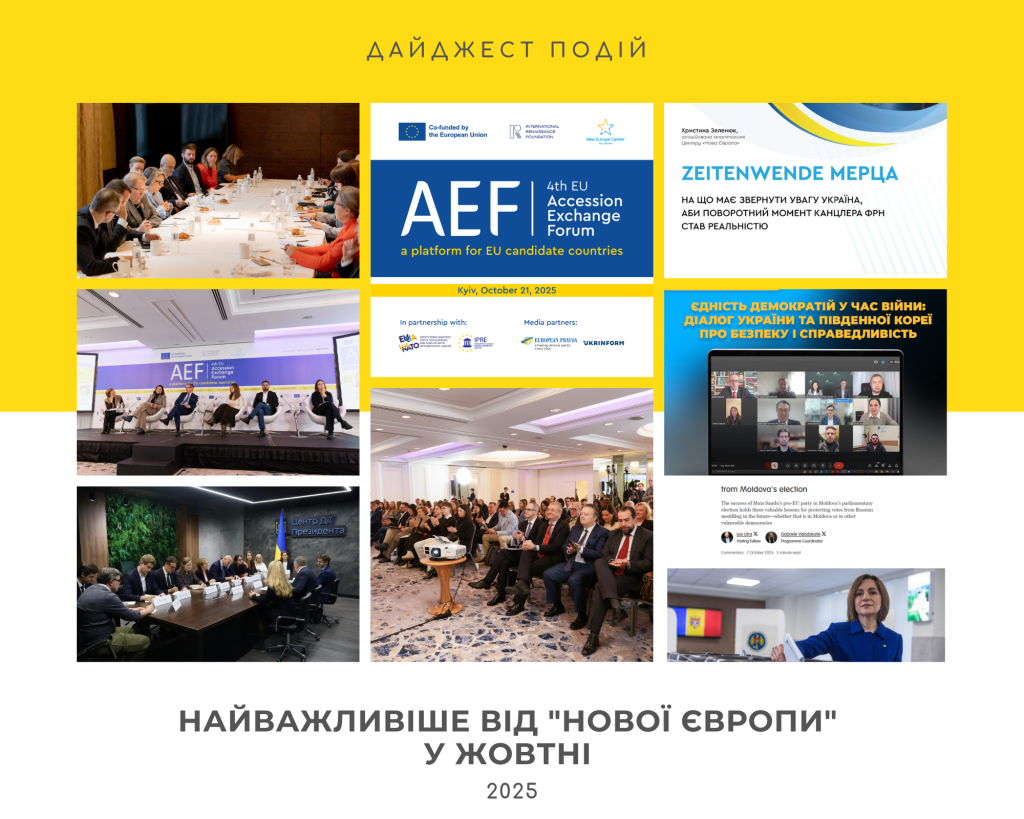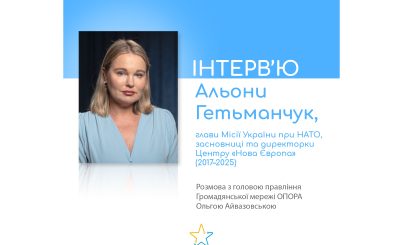Speech by Maryna Mykhailenko, Director of the European Union and NATO Department at the Ministry of Foreign Affairs of Ukraine, which was produced on the event “The Eastern Partnership and Ukraine: looking back, thinking ahead”, organized by the New Europe Center in partnership with the European Union Institute for Security Studies (EU ISS) on February, 19.
- It is my pleasure to point out that 10 years of the Eastern Partnership initiative have been marked by significant Since 2009, the EU and its Eastern partners have become much more integrated, both politically and economically.
Ukraine is convinced that the visa-free regimes and Association Agreements with Georgia, Moldova and Ukraine are the most visible and tangible achievements of the Eastern partnership up to date.
We also acknowledge the achievements reached by other Partner countries within the Eastern Partnership which reflect their ambitious and are in line with their national interests.
It is clear that, in the framework of the EU integration, fundamental transformations have been taking place in all six states.
Thus, the 10th anniversary of the Eastern Partnerships marks the right point where it would be appropriate to inject a new impetus and energy into this important initiative.
In this regard, we were very grateful to the previous leadership of the EC for the idea to launch a consultation process on the future of the Eastern Partnership.
The EU guiding questions were distributed among the participant countries of the EaP. We presented a set of answers. Now the work on a new document that will define our cooperation for the next decade is under way in the EC. This document should be presented at the ministerial meeting which will take place in May.
In this regard, we would be grateful to the EU if the participant countries could be involved in preparation of this new strategy at this stage based on one of the core principals of the EaP – co-ownership. We would not wish to sit and wait for all the work to be completed without our active engagement.
- As of our vision on the future EaP, Ukraine together with Georgia and Moldova is a firm believer in a differentiated approach.
We all agree that the two principles – inclusiveness and differentiation, equally applied to all partners, are key to the Eastern Partnership.
They have allowed maintaining all partners aboard by developing differentiated partnerships tailored to the interests, ambitions and capabilities of each of them.
As a result, multi-track, multi-speed processes are a reality in the EaP, where, on the one hand, three Eastern Partners with the Association Agreements form a distinct group within the group of six and, on the other hand, there are quite a number of projects, where all the six partners share common interests.
- Why the principle of differentiation is so important for Ukraine.
First, we are convinced that the EaP strategy should remain ambitious and respond to the needs, expectations and interests of the countries. We see the inclusiveness of the EaP in its readiness to offer to all six countries a chance of maximum engagement and it will be up to the country to decide how deep to get engaged.
Second, the ongoing reform process in our countries, including Ukraine is necessary but very painful. Thus, we find ourselves at a crucial point where we should add new additional long-term instruments in the EU strategy to help people of a leading group of the Trio of Associated countries to keep motivation and momentum for reforms for the next decade up to 2030.
This is in full compliance with a “more for more” principle. We are convinced that the EU could be more ambitious in using such incentives and initiate a discussion on a forward-looking strategic agenda and political objectives of the Eastern Partnership policy for the next decade.
Third, the EU should also assist these countries more because their success of implementing EU integration reforms will create new opportunities and incentives for remaining countries in the EaP. And it will be possible for them to join us at any time, of course, if it corresponds to their national interests.
Thus, there is no contradiction between such core principles as inclusivity and differentiation within the EaP.
- What would be the practical way to translate the differentiation into reality.
A New Flagship Initiative – the Trio Strategy – should envisage major long-term strategic policy instruments for the period of 2020 – 2030.
These instruments should not only set out what the Trio of Associated countries needs to do but also suggest what the EU can and should do for the Trio up until 2030.
The creation of the Trio of Associated countries will replicate the one initiated by Germany in 2014 to speed up the process of integration of Western Balkans (a so called “Berlin Process” initiative).
You may tell us that this is not the best model taking into account the latest developments over the Republic of North Macedonia. However, at least now we just do not see another way.
The European Trio Process will be led by the EU institutions and a coalition of like-minded countries of the Trio Strategy 2030. This coalition of countries will have a special interest in promoting the Eastern Partnership dimension and its success, and will be in the lead of the forthcoming EU Presidencies for the period of 2020 – 2030.
As for the concrete directions of cooperation within the Trio, developing a structured, institutional dialogue on issues related specifically to the implementation of the AA/DCFTA would be one of the practical examples of differentiation.
It would be useful to focus our attention on broader and deeper sectoral integration with the EU in the spheres of energy, trade, transport, digital economy and customs cooperation.
It is also important that the EU’s comprehensive approach towards conflict resolution and societal resilience be applied in practice.
Countering cyber threats and disinformation might become the new area of cooperation between EaP countries and the EU. Intensification of exchange of data on hybrid threats could significantly contribute to strengthening Partner Countries’ resilience. Particular attention should be paid to capacity-building in the area of cyber security and fight against cyber-crime.
To conclude, Ukraine together with Georgia and Moldova issued a Joint statement on the renewal of the EaP initiative with the main idea to develop the “Eastern Partnership Plus +” format for the associated countries or a “New Flagship Initiative – the Trio Strategy”. We also jointly addressed the EU on importance of relevant financial support for the Eastern Partnership in the next EU Multiannual Financial Framework for 2021-2027 that is currently being shaped by the EU institutions.
In this letter we called on the EU to take into account within its strategic budgetary planning for the next 7 years the scale and ambitions of the reforms, which are being implemented and planned by Ukraine, Georgia and Moldova in the process of their European integration.
The joint address of the Ministers is another sign of unity of Ukraine, Georgia and Moldova in their approaches to future development of the Eastern Partnership, based on the differentiation principle, as well as to the idea of enhanced dialogue in the «EU + 3 Associated Partners» format.
Last but not least, Ukraine is interested in the success of the EaP.
However, the main problem of our initiative is that the ambitions of three AC and the ambitions of the EU towards EaP are very distant.
Moreover, bearing in mind the latest comment made by one of the EU leaders, now the EU ambitions on this initiative is much less than even at the launching of the EAP.
It could jeopardize the success of the initiative.
I am convinced that the Associated countries with their energy and experience can spearhead the EaP.








